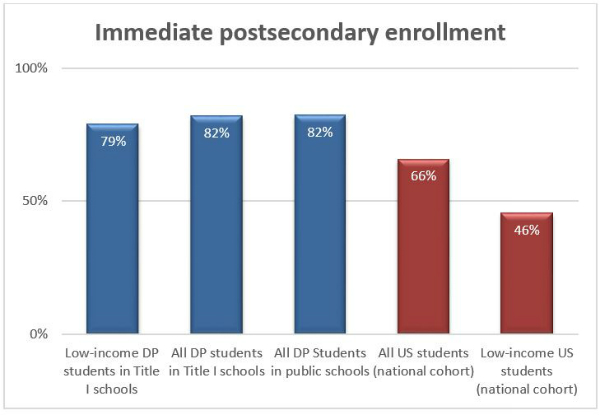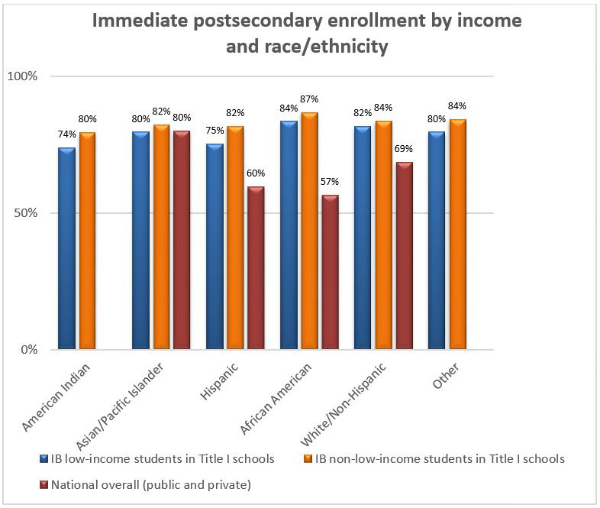 Approximately 45% of children under the age of 18 in the United States are from low-income families. Furthermore, the percentage of children living in poverty appears to be on the rise1. With this growing number of low-income students, it is critical that US educational programs make targeted efforts to ensure that low-income students are provided with quality education and support. Successful interventions have the potential to improve the educational outcomes of low-income students as well as to contribute to equal opportunity and social justice in the United States.
Approximately 45% of children under the age of 18 in the United States are from low-income families. Furthermore, the percentage of children living in poverty appears to be on the rise1. With this growing number of low-income students, it is critical that US educational programs make targeted efforts to ensure that low-income students are provided with quality education and support. Successful interventions have the potential to improve the educational outcomes of low-income students as well as to contribute to equal opportunity and social justice in the United States.
“The IB certainly has a part to play in this and has a commitment to fostering a more diverse and inclusive IB community” says Emily VanderKamp from the IB’s Global Research Team. “At the IB, we aim to enable greater access to an excellent education regardless of personal circumstances.” As part of this commitment, the Global Research team commissioned a new study to explore issues of access and performance among Diploma Programme (DP) students from low-income households in Title I schools. In the US, Title I provides federal assistance to schools with high numbers of students from low-income families with an emphasis on supporting lower-achieving students2.
Here, Emily provides us with the highlights from the latest study.
Access to IB programmes
The study found that 60% of all public schools that offered IB programmes in the US in 2012-2013 were designated Title I (both schoolwide and targeted assistance programs)3. This represents a 46% increase since the 2009–2010 school year. Currently, nearly half (46%) of IB public schools qualify for schoolwide Title I programs. This is comparable to the national average of 52%.
While IB programmes are fairly accessible, fewer minority and low-income students take IB exams. Compared to the national rates, African American students and low-income students are under-represented among DP exam takers in Title I schools. This signifies an area for growth and improvement for the IB.
Postsecondary outcomes
As the figure illustrates, DP students from Title I schools enrol in college at much higher rates than the national averages. Additionally, DP students from Title I schools enrol in college at the same rate as DP students from US public schools generally (82%). Low-income DP students from Title I schools also enrol at a very high rate (79%). This rate is comparable to overall DP student college enrolment and much higher than the national average for low-income students (46%).
 The study also explores how socio-economic status and race/ethnicity are related to college enrolment for DP exam takers from Title I schools. As the figure shows, at 87%, African American DP students from Title I schools have the highest postsecondary enrolment rate among the racial and ethnic groups represented in this study. This is striking considering that nationally the college enrolment rate of African American students is the lowest at 57%. These findings suggest that the race/ethnicity and income of an IB student has limited effects on his or her college enrolment, with students of all racial/ethnic groups enrolling in college at rates of 74% or above. Furthermore, IB students enrol at higher rates than the national average by racial/ethnic group. Read the research brief to learn more.
The study also explores how socio-economic status and race/ethnicity are related to college enrolment for DP exam takers from Title I schools. As the figure shows, at 87%, African American DP students from Title I schools have the highest postsecondary enrolment rate among the racial and ethnic groups represented in this study. This is striking considering that nationally the college enrolment rate of African American students is the lowest at 57%. These findings suggest that the race/ethnicity and income of an IB student has limited effects on his or her college enrolment, with students of all racial/ethnic groups enrolling in college at rates of 74% or above. Furthermore, IB students enrol at higher rates than the national average by racial/ethnic group. Read the research brief to learn more.
 Conclusions
Conclusions
Overall, this study highlights that IB programmes have a large presence in Title I schools in the United States. Yet, more work must be done to encourage greater participation of low-income and minority students in IB programmes in these schools. The postsecondary results of this study are encouraging, however, because they suggest that DP students from many different backgrounds are similarly successful in terms of college enrolment.
We’d love to hear your thoughts and suggestions. How can the IB and individual schools support the participation of low-income and underrepresented minority students in IB programmes?
1 Addy, S., Engelhardt, W., & Skinner, C. (2013). Basic facts about low-income children. New York, NY: National Center for Children in Poverty. Retrieved June 1, 2015, from http://www.nccp.org/publications/pdf/text_1074.pdf
2 U.S. Department of Education. (2014). Retrieved May 25, 2015, from http://www2.ed.gov/programs/titleiparta/index.html
3Schools that have low-income student enrollment of 40% or more may offer a “schoolwide program”, meaning the funds can be used to support initiatives that benefit all students within the school. Title I schools with less than 40% of students from low-income families may offer a “targeted assistance program”, which focuses on students that are either not meeting state academic standards or are at risk of failing to achieve state standards (DOE, 2014).

